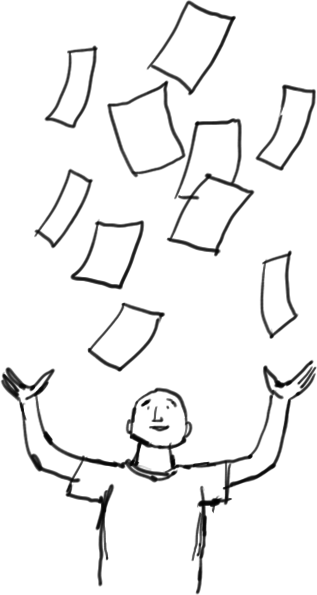Not everything comes to us in order. It's rumored that William S. Burroughs determined the order of the pages in his book, Naked Lunch, by throwing the manuscript in the air and assembling the pages in the order he picked them up. The Qur'an was revealed to Mohammed in sections, and only later did he determine their proper order. The human brain is a pattern-making machine. We seek and find patterns everywhere we look. Leonardo da Vinci used to find inspiration by looking at stains on the wall:
I cannot forbear to mention...a new device for study...which may seem trivial and almost ludicrous...[but] is extremely useful in arousing the mind...Look at a wall spotted with stains, or with a mixture of stones... you may discover a resemblance to landscapes...battles with figures in action...strange faces and costumes...and an endless variety of objects.... | ||
| -- | ||
We are so good at finding patterns that once we find one, it can be difficult to see anything else. Creating randomness is a way of fooling the mind so that you can more easily search for new patterns in familiar domains. By shuffling the deck, reversing the order, or reframing the familiar, you create enough space for new ideas and opportunities to emerge.
Randomness is an essential element in any kind of creativity. The shuffling and recombination of genes, for example, is an essential element in the variation and selection that leads to the emergence of new life forms. The same principle works in the realm of thought and ideas.
A map of the world with south at the top, for example, invites new thinking about the relationships between nations.
One reason to use modular artifacts such as index cards and sticky notes is that they facilitate randomness; they can be easily shuffled, re-sorted, and rearranged to generate new patterns and ideas.
